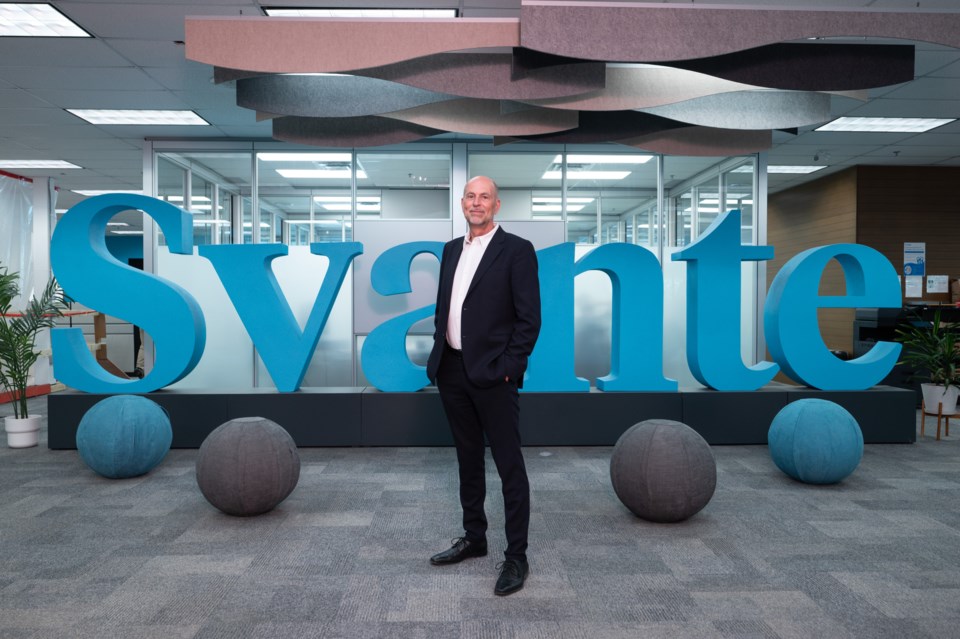A B.C. innovator in carbon capture technology – Svante Technologies -- is getting a major financial assist of up to $137 million from the Canadian government’s new Canada Growth Fund.
The Canada Growth Fund was established by the Trudeau government in 2022 with $15 billion in funding to provide investment capital to Canadian technologies and projects that reduce greenhouse gas emissions. The Canada Growth Fund announced today that Svante will receive up to $137 million from the fund, in two tranches.
“The intent of that money is primarily for us to be a bit more aggressive in participating with our customers in building first-of-a kind carbon capture facilities,” Svante CEO Claude Letourneau told BIV News. “So, we will be a co-project developer, as well as putting equity in the first commercial plants.”
“CGF is working to accelerate the deployment of key Canadian carbon capture technologies, and to scale the manufacturing and export of promising solutions to showcase Canadian technologies internationally,” said Patrick Charbonneau, president of Canada Growth Fund Investment Management Inc.
“Svante has a tremendous market opportunity, globally and here at home, and we look forward to supporting this company in its growth.”
Svante developed an alternative to the “wet” solvent-based technology typically used to capture CO2 from industrial flue stacks. Svante’s innovation is a dry, solid adsorption filter that pulls CO2 out of flue gas, and a machine – the rotary adsorption machine (RAM) -- that wrings the CO2 out of the filters after it has been captured.
Svante’s solid filter system and RAM allows for quicker cycling and is said to be more energy efficient and cheaper than solvent-based carbon capture systems.
Svante has, to date, raised $685 million (US$500 million), more than 90 per cent of which has been from the private sector.
It is spending nearly $200 million (US$145 million) of that on a new 141,000 square-foot manufacturing plant in Burnaby for making filters and designing its rotary adsorption machines.
At full capacity, the plant will have the ability to produce enough filters for 10 carbon capture plants capable of capturing of 10 million tonnes of CO2 per year, Letourneau said. The new plant is expected to be commissioned in May 2025.
The Canada Growth Fund will provide Svante with up to US$100 million ($137 million) in the form of convertible notes, which gives the fund the option of converting the debt to equity.
The funding will be dispersed in two tranches, with a first tranche of $69 million (US$50 million), to be dispersed immediately and used to accelerate and de-risk so-called “first-of-a-kind” commercial projects.
Svante has three business units. One is equipment manufacturing – making carbon capture filters and designing RAM machines. The second is a service business, in which Svante provides technology packages to industry. The third is project development, in which Svante will co-develop carbon capture projects.
Letourneau describes these new carbon capture projects as “first-of-its-kind,” which are inherently financially risky. The initial $69 million from the Canada Growth Fund is intended to help Svante de-risk some of these projects by taking equity positions in them.
“That’s what the money from the Canada Growth Fund will be primarily used for -- so that we can have enough cash to basically be able to invest in these projects, and these projects eventually will get a return on investment,” Letourneau said.
Svante’s technology is already in use in two small demonstration projects, which capture about 10,000 tonnes of CO2 per year.
Some of the projects Svante is now involved in would be much larger in scale – 200,000 to 1 million tonnes per year.
Letourneau said the company will be concentrating on industries like steel and pulp and paper mills, bioenergy and bio-ethanol.
The biggest demand to date for Svante’s technology has been in the U.S., though the market is now starting to grow in Europe, Southeast Asia, the Middle East and Brazil, Letourneau said.


